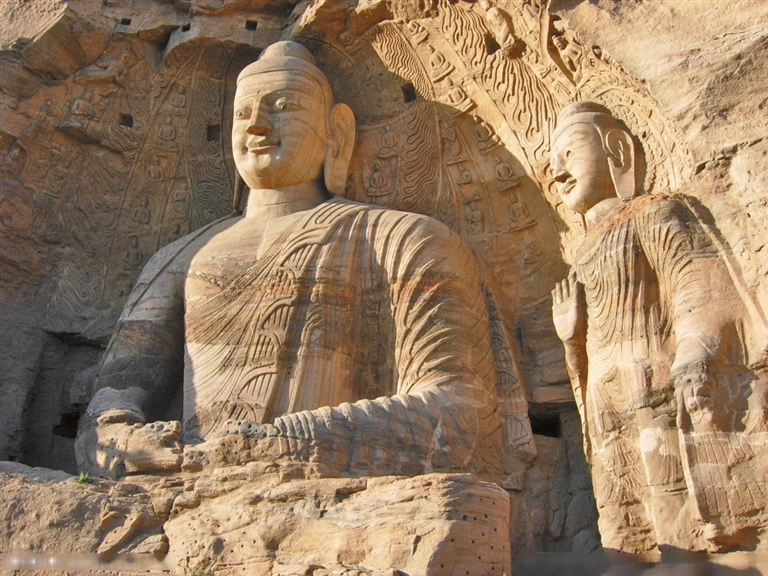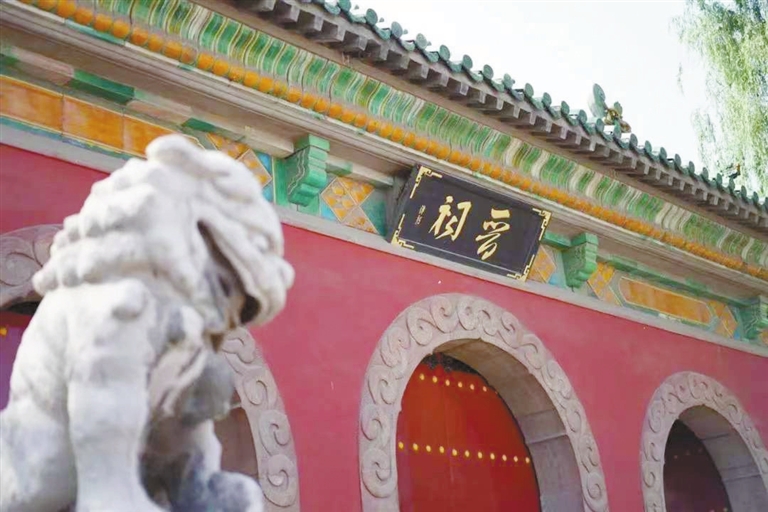



HOW can one spend less while still getting the best possible travel experience? This question has come to mind for many a travel lover. However, if you are no longer a student, full-price tickets to tourist sites during peak travel seasons can amount to a large expenditure. If saving money is the name of the game, then the lower-volume winter travel season marks the best time to see North China. Sure, it will be colder, but the crowds will be lighter and, for the most part, you can still do everything you would have done during the summer’s peak tourist season. Ancient buildings in Shanxi China is home to over 160 wooden architectural structures dating back to the Song Dynasty (960-1279) and even earlier. Among them, 75 percent are located in Shanxi. In Shanxi, there are over 10,000 buildings from the Ming (1368-1644) and Qing (1636-1912) dynasties. Here you can appreciate the solemn East Hall of Foguang Temple, observe the numerous Taoist murals of Yongle Palace at close proximity, or enjoy the uniqueness of the colorfully painted sculptures of the 28 stars at the Emperor Jade Pagoda in Fucheng Village. In Shanxi, winter arrives early, and it may snow as early as the middle of November. As a result, tourism also dips into a low-volume period, making it possible to get a unique look at the ancient buildings covered in snow on a relatively low-price ticket. Yungang Grottoes The Yungang Grottoes are ancient Chinese Buddhist temple-grottoes near the city of Datong in Shanxi. They are excellent examples of rock-cut architecture and one of the three most famous ancient Buddhist sculptural sites of China. The others are Longmen and Mogao. This historic monument combines Chinese culture with the West as it is a Buddhist art treasure, which took nearly a dynasty to complete and was the first time such a monument was built since Buddhist art spread to China. The Yungang Grottoes were inscribed into the World Cultural Heritage List by UNESCO in December 2001 and became the first in the group of level-5A Chinese Tourist Areas in May 2007. Tickets: Peak season: 120 yuan; low season: 100 yuan Hours: Peak season: 8:30 a.m.-5:30 p.m.; low season: 8:30 a.m.-5 p.m. Shanhua Temple Located in Datong, Shanxi Province, Shanhua Temple was first founded during the early 8th century of the Tang Dynasty, but its earliest surviving building dates from the 11th century. The temple was heavily repaired over the years, and today three original halls and two recently rebuilt pavilions survive. The whole temple covers an area of 20,000 square meters and consists of three main halls. The main buildings are arranged on a north-south axis. The Main Gate and the Sansheng Hall were both built in the 12th century during the Jin Regime. Daxiongbao Hall is the northernmost and largest hall. The interior contains four large statues of Buddha representing the four cardinal directions. There is also a central statue representing Sakyamuni. Tickets: Free Hours: Peak season: 8 a.m.-6 p.m.; low season: 8:30 a.m.-5:30 p.m. Wooden Pagoda of Ying County The Sakyamuni Pagoda, also known as the Yingxian Pagoda as it was housed in the Fuogong Temple of Yingxian County, is the oldest full-wooden pagoda still standing in China and believed to be the oldest of its kind in the world. Standing 67.31 meters tall, the octagonal pagoda was built in 1056 during the Khitan-led Liao Dynasty. The wooden tower has survived several strong earthquakes and wars, although it now has a tilt, which causes worries over its structural integrity. In 2016, the Guinness World Records officially announced the incredible Sakyamuni Pagoda as the world’s tallest wooden pagoda. Tickets: Peak season: 60 yuan; low season: 50 yuan Hours: Peak season: 7:30 a.m.-7 p.m.; low season: 8 a.m.-5:30 p.m. Hanging Temple The Hanging Temple, also called the Hanging Monastery or Xuankong Temple, is a temple built into a cliff 75 meters above the ground near Mount Heng in Hunyuan County, Datong City, Shanxi. Built more than 1,500 years ago, this temple is notable not only for its location on a sheer precipice but also because it is the only existing temple that combines three of China’s commonly practiced religions: Buddhism, Taoism and Confucianism. The structure is kept in place with oak crossbeams fitted into holes chiseled into the cliffs. The main supportive structure is hidden inside the bedrock. Tickets: Peak season: 30 yuan; low season: 15 yuan Entry fee: 100 yuan Hours: Peak season: 8 a.m.-6 p.m.; low season: 8:30 a.m.-4:30 p.m. Mount Wutai Mount Wutai, literally “the five-terrace mountain,” is one of the four sacred Buddhist mountains in China and is remarkable for its morphology of precipitous slopes and five open, treeless peaks. The cultural landscape is home to dozens of monasteries and includes the East Main Hall of Fuoguang Temple and the highest surviving timber building of the Tang Dynasty with life-sized clay sculptures. It also features the Ming Dynasty’s Shuxiang Temple, which includes a huge complex of 500 statues representing Buddhist stories woven into three-dimensional pictures of mountains and water. Overall, the buildings here catalogue the way in which Buddhist architecture developed and influenced palace-building in China for over a millennium. Temples were built on this site from the first century to the early 20th century. Tickets: Peak season: 135 yuan; low season: 118 yuan Hours: All day Jinci Temple Jinci Temple, located 25 kilometers away from downtown Taiyuan City at the foot of Xuanweng Mountain, is a place of interest famous for its long history and rich cultural relics. It is the most prominent temple complex in Shanxi. The temple was built in memory of Shu Yu of Tang, the founder of the State of Tang during the early Zhou Dynasty (1046-771 B.C.) of ancient China. The State of Tang would later be renamed Jin by Shu Yu’s son and successor, Xie. The temple was founded about 1,400 years ago and expanded during the following centuries, resulting in a diverse collection of more than 100 sculptures, buildings, terraces and bridges. Tickets: Peak season: 80 yuan; low season: 65 yuan Hours: 8:30 a.m.-5 p.m. (Chen Xiaochun) | 
